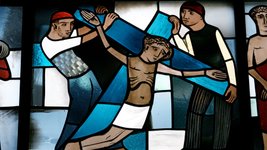Revisiting the Patristic Theology of the Icon. Part 1: Setting Aside our Western Assumptions.
ikonographics.blogspot.com
Revisiting the Patristic Theology of the Icon. Part 1: Setting Aside our Western Assumptions.


The Swedish Lutheran theologian, Gustav Aulén, published a seminal work on the types of atonement theory in 1930 (Christus Victor). Though time and critical studies have suggested many subtler treatments of the question, no one has really improved on his insight. Especially valuable was his description of the “Classic View” of the atonement. This
... See more